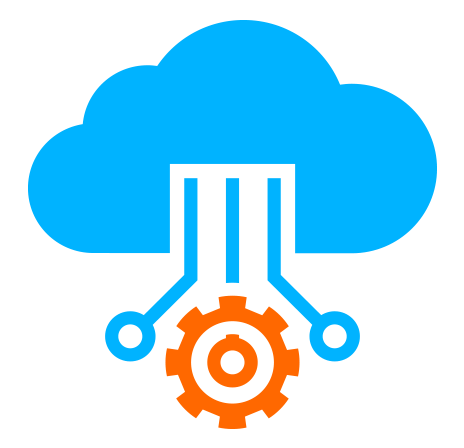 Server
Colocation
Server
Colocation
 CDN
Network
CDN
Network
 Linux Cloud
Hosting
Linux Cloud
Hosting
 VMware Public
Cloud
VMware Public
Cloud
 Multi-Cloud
Hosting
Multi-Cloud
Hosting
 Cloud
Server Hosting
Cloud
Server Hosting
 Kubernetes
Kubernetes
 API Gateway
API Gateway

The NVIDIA H100 GPU significantly outperforms the A100 in most key metrics, including CUDA cores (18,432 vs 6,912), Tensor Core generation (4th gen vs 3rd gen), memory type and bandwidth (80GB HBM3 with 3.35 TB/s vs 80GB HBM2e with 2 TB/s), and peak FP32 performance (60 TFLOPS vs 19.5 TFLOPS). The H100 adds architectural innovations like the Transformer Engine for enhanced AI training and inference, supports PCIe Gen5, and faster NVLink (4.0) for improved multi-GPU scalability. While the A100 remains powerful and versatile, the H100 offers up to 9x faster AI training and 30x faster inference, making it the preferred choice for the latest demanding AI workloads despite a higher power draw and price.
NVIDIA's A100, launched in 2020 based on the Ampere architecture, has been a leading GPU for AI, HPC, and data analytics. Its 6,912 CUDA cores and support for Multi-Instance GPU (MIG) technology allow high flexibility.
The newer H100, released in 2022 with Hopper architecture, elevates GPU capability further with 18,432 CUDA cores, advanced Tensor Cores, and support for faster memory and connectivity standards.
Both GPUs target data centers and enterprise AI workloads, but the H100 is designed for next-generation model training and inference acceleration.
|
Feature |
NVIDIA H100 |
NVIDIA A100 |
Impact |
|
CUDA Cores |
18,432 |
6,912 |
2.7x more cores for parallelism |
|
Tensor Cores |
4th Gen (FP8 support) |
3rd Gen |
6x faster AI training |
|
Memory |
80GB HBM3 (3.35 TB/s bandwidth) |
80GB HBM2e (2 TB/s bandwidth) |
67% higher memory bandwidth |
|
Peak FP32 Perf. |
60 TFLOPS |
19.5 TFLOPS |
3x improvement |
|
Architecture |
Hopper |
Ampere |
New Transformer Engine and features |
|
TDP |
700W |
400W |
Higher cooling requirements |
|
NVLink |
4.0 (900 GB/s) |
3.0 (600 GB/s) |
50% faster multi-GPU scaling |
|
PCIe Support |
PCIe Gen5 |
PCIe Gen4 |
Faster data transfer |
|
Price (MSRP) |
~$30,000 |
~$15,000 |
Higher initial investment |
These improvements empower the H100 for demanding AI and HPC workloads.
The H100 introduces the Transformer Engine, optimized for mixed precision formats like FP8 and FP16, drastically speeding large language model training and inference—up to 9x faster training and 30x faster inference compared to A100.
Fourth-generation Tensor Cores in the H100 support a wide range of precisions, enhancing flexibility and computational efficiency.
Additionally, NVLink 4.0 enables up to 900 GB/s bandwidth for GPU-to-GPU communication, improving distributed and multi-GPU workloads by enabling scaling across up to 256 GPUs.
Second-generation MIG technology in H100 also offers almost 3x more compute capacity per GPU instance than the A100.
The H100's architectural upgrades translate to substantially higher throughput and efficiency:
Training: Up to 2.4x faster throughput on mixed precision models, critical for large-scale transformer models.
Inference: 1.5 to 2x faster than A100, powered by enhanced memory bandwidth and the Transformer Engine.
FP8 Precision: Reduces memory usage while boosting performance, particularly beneficial for NLP and vision models.
The A100 remains highly capable, serving diverse AI, HPC, and analytics needs with its strong tensor core performance and MIG flexibility but lags in absolute peak speed compared to H100.
NVIDIA A100: Ideal for multi-tenant environments with MIG splitting, traditional AI workloads, scientific simulations, and analytics requiring high precision.
NVIDIA H100: Best suited for cutting-edge AI research, training of large-scale generative models, real-time AI inference at scale, and HPC tasks demanding extreme performance and scalability.
Choosing between them depends on workload type, budget, and infrastructure readiness.
The H100 demands more power (700W vs 400W for A100), necessitating more advanced cooling solutions. While the initial investment is higher (approx. double MSRP), its performance gains can translate to lower overall operational costs in AI training time and cloud usage.
In cloud settings, H100 instances may cost around $3/hour, whereas A100 prices range from $1.50 to $2.50/hour, so budget and workload efficiency must guide selection.
Yes. The A100 supports first-generation MIG to partition GPUs into up to 7 instances, while the H100 supports second-generation MIG with about 3x more compute capacity per instance, offering better resource utilization.
It's an NVIDIA innovation in H100 that accelerates transformer model computations using specialized precision (FP8 and FP16), significantly boosting training and inference of language and vision models.
NVLink 4.0 in H100 offers 900 GB/s bandwidth, 50% faster than NVLink 3.0's 600 GB/s in A100, allowing better multi-GPU communication and scalable AI workloads.
Generally, yes. The H100 supports popular AI frameworks and software stacks but may require updated drivers to leverage new features.
The NVIDIA H100 is a substantial leap forward from the A100 in raw performance, architectural innovations, and AI workload acceleration. While the A100 remains a powerful, versatile GPU for many AI and HPC Cloud applications, the H100's enhancements like the Transformer Engine, upgraded Tensor Cores, and faster memory and connectivity make it the premier choice for demanding modern AI projects. Evaluating workload needs, budget, and infrastructure is essential to choosing the best fit.

Let’s talk about the future, and make it happen!
By continuing to use and navigate this website, you are agreeing to the use of cookies.
Find out more


